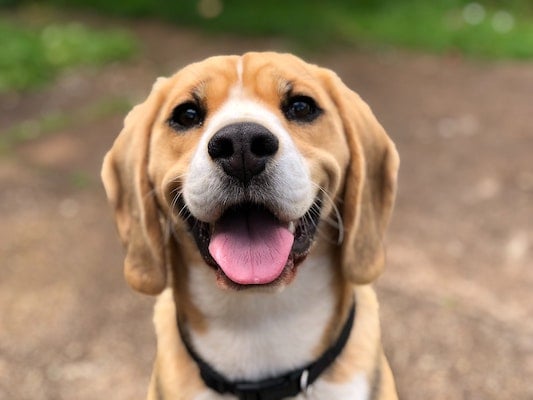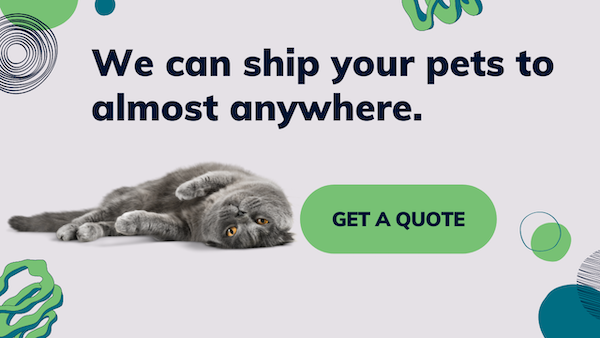Should I Feed My Dog Before Flying? What Else Should I Know?
Updated on: April 19, 2022 | Author: Starwood Pet Travel

It seems like a simple question – should you feed your dog prior to their flight? You don’t want them to go hungry, but you don’t want them to get sick, either. Unfortunately, this question is one of many examples where researching online results in conflicting information and opinions that can lead you to the wrong conclusion. So let’s set the record straight.
Before your dog’s flight
We always recommend feeding pets more than 4 hours prior to being picked up from their home or arriving at the airport. This gives your dog enough time to digest their food and, hopefully, pee and poop before going into their travel kennel. We don't want pets to travel on full stomachs, as it can cause an upset tummy and we also don't want your dog to have to relieve themselves in the crate.
Despite your best efforts to reduce your dog's pre-flight jitters, they may still be somewhat anxious. A full stomach will give their body one more thing to deal with. If your dog is a flat-faced breed (aka snub-nosed or brachycephalic), discuss the feeding question with your vet, because many brachycephalic dogs have ongoing digestive issues that can be exacerbated by air travel.
We all know hydration is important, for dogs as well as people. Offer them a little water before departure, but don’t over-water them. A full bladder won’t be fun and having an accident along the way will only make your dog more upset. Do keep in mind, that there is typically an opportunity for a potty break right before check-in at the airport. However, once your dog is checked in for the flight, they will need to stay inside their travel kennel until they arrive to the destination.
During the flight
Most airlines require that pets travel with a small zip-lock bag of their food attached to the top of the crate - but they are not provided food to eat during the flight. Again, this is to avoid an upset stomach or going to the bathroom inside the kennel. Each pet should have two bowls attached to the inside of the kennel door - one to be filled with water and one that can be filled with ice (you can fill and freeze it ahead of time). There should also be a funnel and tube so the handling staff can fill the water dish up again prior to departure.
After your dog arrives
It might be tempting to let your dog help themselves to as much food and water as they please once they arrive at the destination. After all, surely they are hungry and thirsty! However, it is best to only give dogs small amounts of fresh water over a period of time. Providing too much water can cause pets to drink too much too quickly and get sick. The same holds true with food – feed small, frequent amounts to avoid eating too much too quickly. This is extremely important to remember if you have a large dog. Dogs who eat or drink too much, too fast can suffer from bloat which can be life-threatening. This is especially concerning for large breed dogs with deep chests, but this can occur with any breed.
Food during transit stops
As mentioned above, you should provide a few servings of dry food in a zip-lock baggie to attach to the top of your pet's travel kennel. This will be used if there are extreme flight delays or if your pet has an extended layover throughout their travels. Some airports such as in Frankfurt, Amsterdam and London have onsite pet facilities for animals who are transiting (or even if it's their final destination). The animal handlers at these facilities will provide pets with food and water during their layover.
Don’t “feed” them tranquilizers
Lots of pet parents assume they should sedate their dog to help them relax during air travel. Do NOT do that. Airlines do not accept tranquilized or sedated pets for travel, because the drugs do more harm than good. They can disrupt your dog's natural ability to maintain balance when their kennel is being moved, which can make them more anxious. Additionally, sedatives or tranquilizers can cause respiratory or cardiovascular problems when they are up in the air at high altitudes.
Pack a supply of food for your new home
Your pet will be happier in their new home if they have familiar food. Plus, changing your pet's food can cause an upset stomach. Be sure to pack a supply to tide you over until you can find a local pet supply store. If your pet eats prescription or specialized food, this is even more important. Make sure you do your research for what types of dog food you can find at your new destination. You should also try to find a local vet quickly as they can also be a good resource for this in your new home. When you visit your vet to obtain your dog’s health certificate for travel, remember to stock up on their special food if needed - and maybe some of their favorite treats.
You may also wish to bring a small portion of food to carry with you on your own flight, in case your packed belongings don’t arrive right away. Keep in mind that each country and airline has their own restrictions on items you are allowed to bring with you, so be sure to check with them first.
Subscribe to the Blog
Enjoy our content? Get them sent to your inbox!
Subscribe Now!

